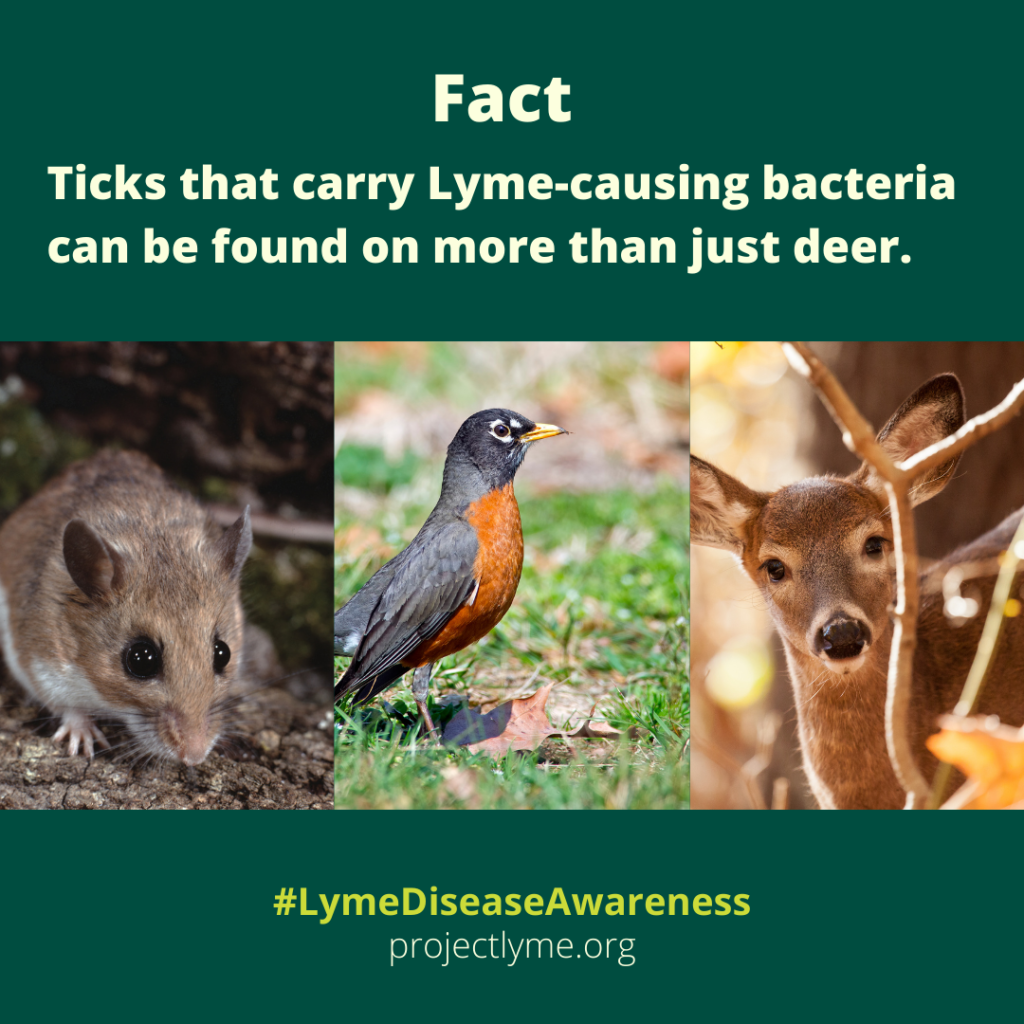Prevention
How Do You Get It?
The majority of people become infected with Lyme disease through tick bites, but there are a variety of other ways one can become infected. Project Lyme answers this important question to help minimize your chance of transmission.


Tick Bites
The majority of people become infected with Lyme disease through tick bites. Each tick advances through four stages of development: egg, larva, nymph, and adult. About the size of a poppy seed, immature nymph ticks account for most cases of disease transmission. Their small size conceals them. Plus, tick saliva contains anesthetic agents, so tick bites don’t tend to cause pain.
The combination of a tick’s tiny stature and a painless bite allows it to go undetected, and many people don’t know they were even bitten. Adult ticks also transmit Lyme, but their larger size makes them more vulnerable to being seen and removed.
Once a tick has latched onto the skin, it begins to feed on the host’s blood. If not discovered and removed, it could continue its feeding process for days. The longer the tick is attached, the higher the risk it will transmit Lyme or other tick-borne diseases into the bloodstream.
Besides Lyme, a single tick might also carry multiple infectious microbes called coinfections, including Bartonella, Babesia, and a range of other tick-borne diseases. Even when a tick is detected early and promptly taken out, it’s still possible to contract Lyme or a coinfection, though the transmission rates are lower.
More Than Just Deer
There is a misconception that ticks are only found on deer. While Ixodes scapularis may be commonly known as the deer tick, by no means does that mean they are the only hosts carrying Lyme-infected ticks. Results from a study done by the National Science foundation shows that white-footed mice, western gray squirrels, and multiple species of birds are all capable of carrying Lyme disease. Their findings also emphasize that these animals are under‐recognized in their contributions to tick-borne diseases and should be more broadly researched. Project Lyme shares which creatures are competent carriers, so that you can more effectively plan and implement strategies to assess the risk and prevent the spread of tick-borne infections like Lyme.

Congenital Lyme
Another mode of contracting Lyme may be through mother-to-child transmission in utero, known as congenital Lyme disease. Organizations like Mothers Against Lyme have undertaken awareness, education, and advocacy efforts to inform the public about the impact of congenital Lyme and coinfections on women, children, and families. Although rare, if a woman contracts Lyme while pregnant, adverse fetal outcomes, such as placental infection, miscarriages, and stillbirths, have also been reported. Some people believe Lyme may be transmitted by intimate person-to-person contact, but research has yet to provide any conclusive answers on this subject.
In order to stimulate research interest in Lyme and other tickborne diseases, as well as maternal and perinatal infectious diseases, NIH has issued a series of notices to encourage investigators to apply for grants and has asked stakeholder organizations for help getting the word out. In April 2021, Project Lyme and Mothers Against Lyme hosted a webinar featuring representatives from the NIH and NIAID to help educate the public on how to apply for grants.

